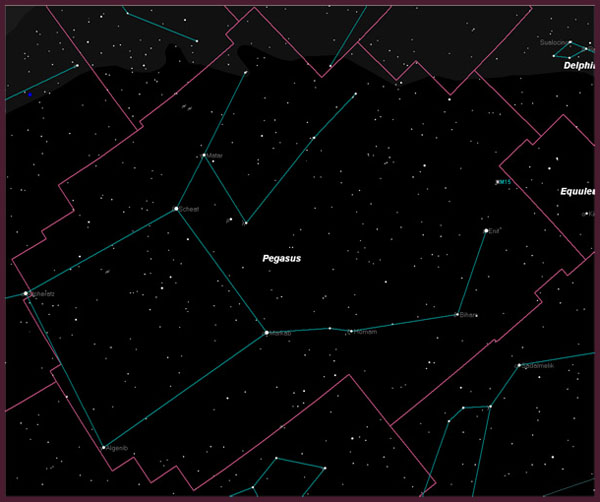|
|

|
Pegasus, the white, winged horse appears in mythology in multiple tales. To keep this account brief two will be addressed here in no great detail: Medusa was a Gorgon; a creature with snakes in lieu of hair and so hideous that the site of her would turn a living creature to stone. She began life as a beautiful maiden and had the unfortunate circumstance to be noticed by Poseidon (Neptune), who, thinking she was pretty hot, pursued her. Eventually Poseidon was able to seduce Medusa and to her misfortune, did so in a temple dedicated to Athena (Minerva). The goddess was already jealous of Medusa’s beauty and the affront to her temple was just too much, so Medusa was transformed into a Gorgon by Athena. Having started out as a woman, she was mortal unlike her two sisters. When Perseus, aided by Hermes (Mercury) and Athena, slew Medusa, Pegasus sprang full-grown from her body (another account indicates Pegasus sprang from Medusa’s blood dripping into the sea as Perseus carried off her head). Therefore, Pegasus was the product of a union of Medusa and Poseidon. Athena caught and tamed the horse employing a golden bridle and presented him to the Muses (the Greek goddesses of inspiration, learning, the arts and culture – nine in total). The fountain Hippocrene, on the Muse's mountain named Helicon, was opened by a kick from his hoof. You’re probably familiar with the story of Perseus and how Pegasus ties in with his tale. Pegasus was added in the sky as a constellation by the gods as a reward for his great deeds. Another Pegasus tale has a warrior named Bellerophon (be ler’o fon) who was challenged to do battle with and hopefully destroy the Chimaera (ki mir’a), a fearful, fire-breathing monster with the body of a lion and a goat in front and that of a serpent (or dragon) in rear that had developed an appetite for eating the locals. The Chimaera was creating havoc and the king Iobates was seeking a champion to destroy the creature. Bellerophon came to Iobates bearing a letter from his son-in-law Proteus, describing him in glowing terms, but ending with a request to please, ‘murder him while he’s in town as he’s making me a bit jealous around my beautiful young wife’. This unconsciously bearing of his own death warrant is where the expression ‘Bellerophontic Letter’ comes from (this is any species of communication in which a person is made the bearer of, containing matter prejudicial to himself). |
|
Iobates considered this dilemma and asked Bellerophon to please kill the Chimaera, which he readily agreed to do. However, before
accepting the proposal, he consulted a soothsayer named Polyidus (pol e idus), who advised him to seek the aid of Pegasus for the task. He was further advised to pass
the evening in the temple of Athena to think things over. During his sleep that night, Athena visited him in a dream and she provided him with the golden bridle and
indicated where Pegasus could be found. Soon after, with the bridle in hand, he was able to capture Pegasus and allied with the flying horse, killed the Chimaera by
flying above and shooting arrows into it, followed by installing a lump of lead on the end of a spear, which was thrust into the creatures jaws. This lead melted from
the Chimaera’s hot breath and trickled down its throat causing its demise. Iobates persuaded Bellerophon on to other adventures and trials, and eventually figured out that he appeared to have the protection of the gods. Upon coming to this conclusion, he offered Bellerophon his daughter’s hand in marriage and made him successor to his throne. Bellerophon’s adventures and tribulations eventually made him headstrong and prideful to the point he’d decided to fly Pegasus to Mount Olympus one day to visit with the deities. This presumption angered the gods and once the journey commenced, Zeus (Jupiter) sent a gadfly to sting Pegasus, who threw Bellerophon off; he survived the fall but became lame and blind in consequence and wandered alone, in pain and on foot the rest of his miserable life, avoiding the paths of men. Legend has it that Pegasus continued to fly into the heavens and took his place among the stars. Another version indicates that Zeus used Pegasus to delivery his thunderbolts & lightning along with Aquila (the Eagle) and eventually Zeus placed the head and shoulders of the winged horse in the sky as a reward. |

|
Home